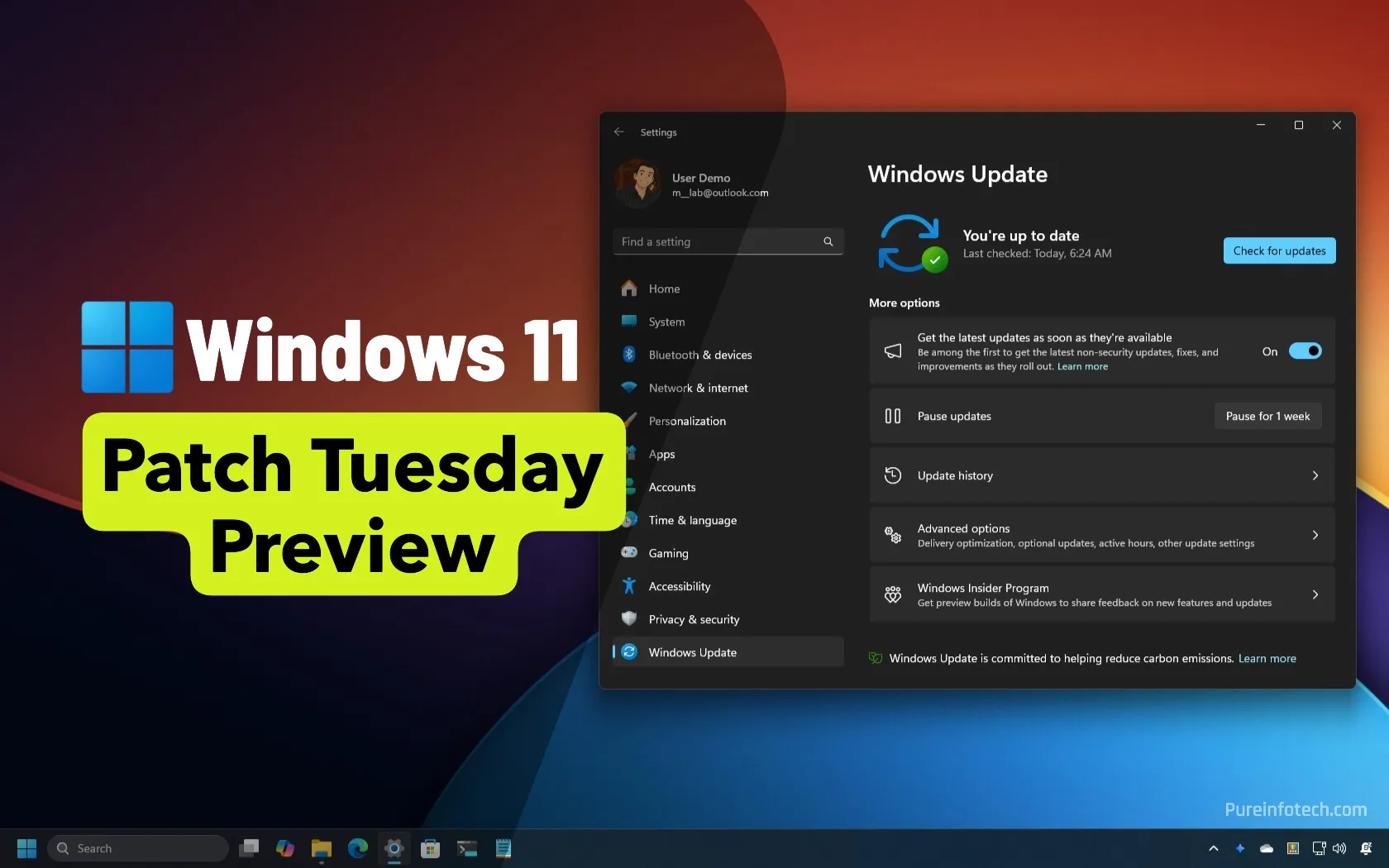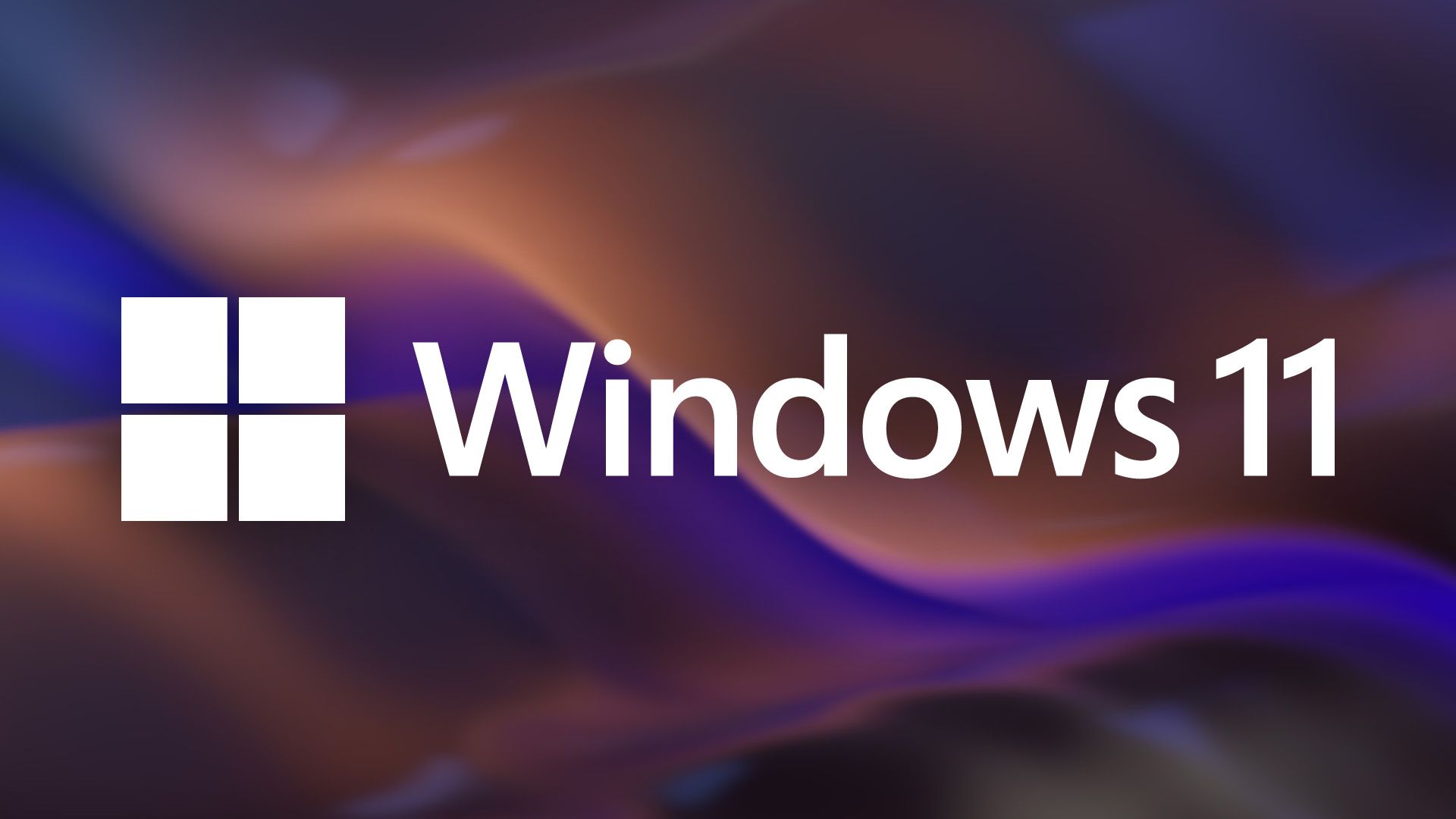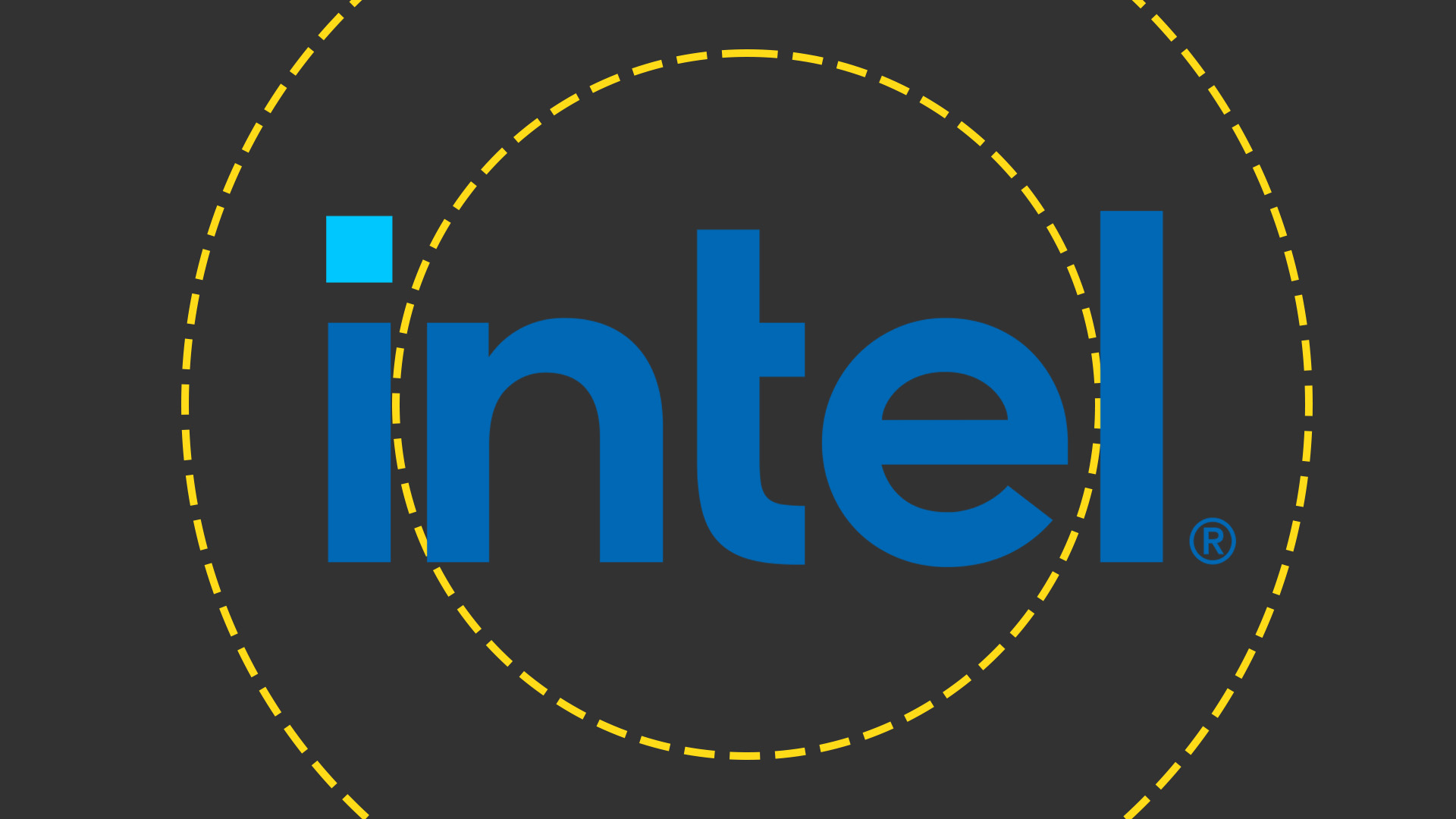Lenovo ThinkPad P1 Gen 7 review

The new Lenovo ThinkPad P1 Gen 7 is a Windows workstation laptop available with a wide selection of Nvidia GPUs and Intel Core Ultra CPUs. As the name suggests, it replaces the Lenovo ThinkPad P1 Gen 6 from 2023.
As you’d expect from a ThinkPad P1 the Gen 7 machines are available with a very wide range of specifications, including four Intel Core Ultra processors, three display types, five Nvidia GPUs or no discrete GPU, a choice of operating systems – Windows 11 Home or Pro, Fedora or Ubuntu or no OS – and various choices of SSD and RAM.
Given that range of options, the price varies dramatically too. The machine we were sent with a 165Hz 2.5K screen, Core Ultra 165H vPro CPU, integrated Arc GPU, and a 1TB SSD will set you back £2,505 (£2,087 ex VAT) but that’s on offer from Lenovo, down from a regular selling price of £2,890 (£2,408 ex VAT)
The cheapest model you can specify with Windows pre-loaded will cost £2,080 (£1,722 ex VAT) – down from the usual RRP of £2,329.99 – while at the top end with every option maxed out including two 4TB SSDs be prepared to part with an eye-watering £5,132 (£4,276 ex VAT) – down from a regular RRP of £5,920. High-end Lenovo laptops have never been cheap so none of this should come as a surprise.
Lenovo ThinkPad P1 Gen 7: Design
The design of the new ThinkPad P1 is a thorough overhaul of the outgoing Gen 6 model with several design cues co-opted from the ThinkPad Z16 like the stiff aluminum lid with a camera bump and the large haptic trackpad with virtual mouse buttons.
The result is a smart and modern-looking laptop – the new thinner screen bezels play a big part here – made from a mix of aluminum and magnesium and built like an Iowa-class battleship. Make no mistake this is one of the stiffest and most solid laptops ever to cross our desk here at ITPro. The P1 also meets the MIL-STD 810H standard for resistance to shock, particle ingress, and extreme temperature.
This being a ThinkPad there’s only one color option and that’s Henry Ford black but the reassuring ThinkPad name is still engraved on the deck and lid, the latter with a small red LED to dot the i. The paint finish is still rather too susceptible to fingerprints which is something we wish Lenovo would fix.
At 354.40mm x 241.20mm x 17.05mm the new P1 is reasonably svelte for a 16in workstation and at 1.76Kg it’s not unduly heavy – though machines with a discrete GPU will doubtless weigh more. For comparison the 16in MacBook Pro is slightly thinner but heavier while the Dell XPS 16 is both thicker and heavier.
There’s a comprehensive range of I/O ports with two Thunderbolt 4 ports, an HDMI 2.1 video output, and a 3.5mm audio jack on the left along with a proprietary Slim tip connector DC power jack. On the right there is a third Type-C port, this time 10Gbps spec but also supporting DP Alt Mode video, a 5Gbps USB-A port, a full-depth SD card reader, and a Kensington security slot.
You can charge the P1 using any of the Type-C ports. Out 100W PC charger worked perfectly though the 65W unit caused a “slow charger” alert to pop up. The 135W rat-and-tail DC charger that comes with the integrated graphics P1 is smaller and lighter than the norm so carrying it with you isn’t a chore. The 170W unit that comes with discrete GPU models is larger. Lenovo boasts that a 60-minute charge will get you to 80% capacity which we found to be accurate.
Wireless communications are at the bleeding edge with support for 6Ghz Wi-Fi 7 and Bluetooth 5.4 courtesy of the Intel BE200 2×2 card. It’s been a while since you could option a cellular modem in a P1 and the new Gen 7 machine hasn’t reintroduced the feature. A shame in our opinion.
Removing the base plate from the ThinkPad P1 Gen 7 is a simple operation that doesn’t even require a prying tool. One inside you’ll find two M.2 2280 PCIe Gen 4 NVMe SSD slots but no SODIMM slots.
That’s because Lenovo has opted for a single LPCAMM2 (Low-Power DRAM, Compression Attached Memory Module) unit. The single module carries low-power LPDDR5X memory in 16, 32, and 64GB sizes. This of course means you can’t spec a Gen 7 machine with the same amount of RAM as you could a Gen 6 machine which could accommodate two 48GB sticks.
If you want to upgrade the memory post-purchase you can remove the LPCAMM2 unit by undoing three screws. Usefully there’s a guide on how to do it available via a QR code on the memory module. Of course, upgrading means adding a whole new module, and since LPCAMM2 is still relatively new that makes it a more expensive option than just upgrading SODIMMs.
A point worth clarifying here is that unlike the P1 Gen 6 which only offered two SSD bays in the models with lower power GPUs the new Gen 7 machines all share the same internal layout no matter what the GPU configuration.
Lenovo ThinkPad P1 Gen 7: Keyboard, touchpad and webcam
The new P1 features a keyboard that’s very similar to that used on the ThinkPad Z16 which means there’s no numeric keypad. Thankfully all the good points of the Z16 keyboard have been carried over, including the rock-solid deck and crisp, precise key action. The keys have a standard 1.5mm travel and a smooth, perfectly damped end stop. The keyboard graphics and two-stage backlight are models of clarity.
The P1 has a larger trackpad than the Z16 at 135 x 85mm but is otherwise the same – a beautifully engineered glass-covered haptic affair with virtual buttons at the top in place of the physical mouse buttons found on traditional ThinkPads. As a compromise between ThinkPad functionality and mainstream laptop design, it’s very good.
I’m sure some will bemoan the absence of the traditional ThinkPad physical mouse buttons but adapting to the new design takes little time and means you can have a much larger trackpad. If you want a traditional ThinkPad touchpad with physical buttons and a numeric keypad Lenovo still has you covered with its P16 range of laptops.
Lenovo couldn’t call a machine a ThinkPad without the TrackPoint so the iconic red nub still sits in pride of place where the G, H, and B keys meet.
As a way of moving a cursor without moving your hand, it’s a design yet to be bettered. Like all modern ThinkPads, a quick double tap of the TrackPoint opens up the TrackPoint menu which lets you adjust various camera and sound settings and open Microsoft Dictation.
The webcam is an impressive affair capable of capturing video at 1440p and showing strong vibrant colours even in quite poorly lit environments. This being a Core Ultra-powered laptop you get all the special effects that form the Windows Studio Effects suite and which run on the neural processor.
Given that the P1 is the quintessence of an enterprise laptop, it offers all of the expected security features like a Kensington lock slot, a fingerprint reader built into the power button, a dTPM chip, and an infrared camera that supports Windows Hello. There’s also a physical camera shutter for the ultimate privacy protection.
Also preloaded is Glance by Mirametrix (here rebranded as Lenovo View), an application that adds presence-sensing capability. When turned on, it can automatically lock your computer when you walk away, pause a video, or blur the content when you aren’t directly looking at the screen. It can also issue an alert if it detects someone looking over your shoulder.
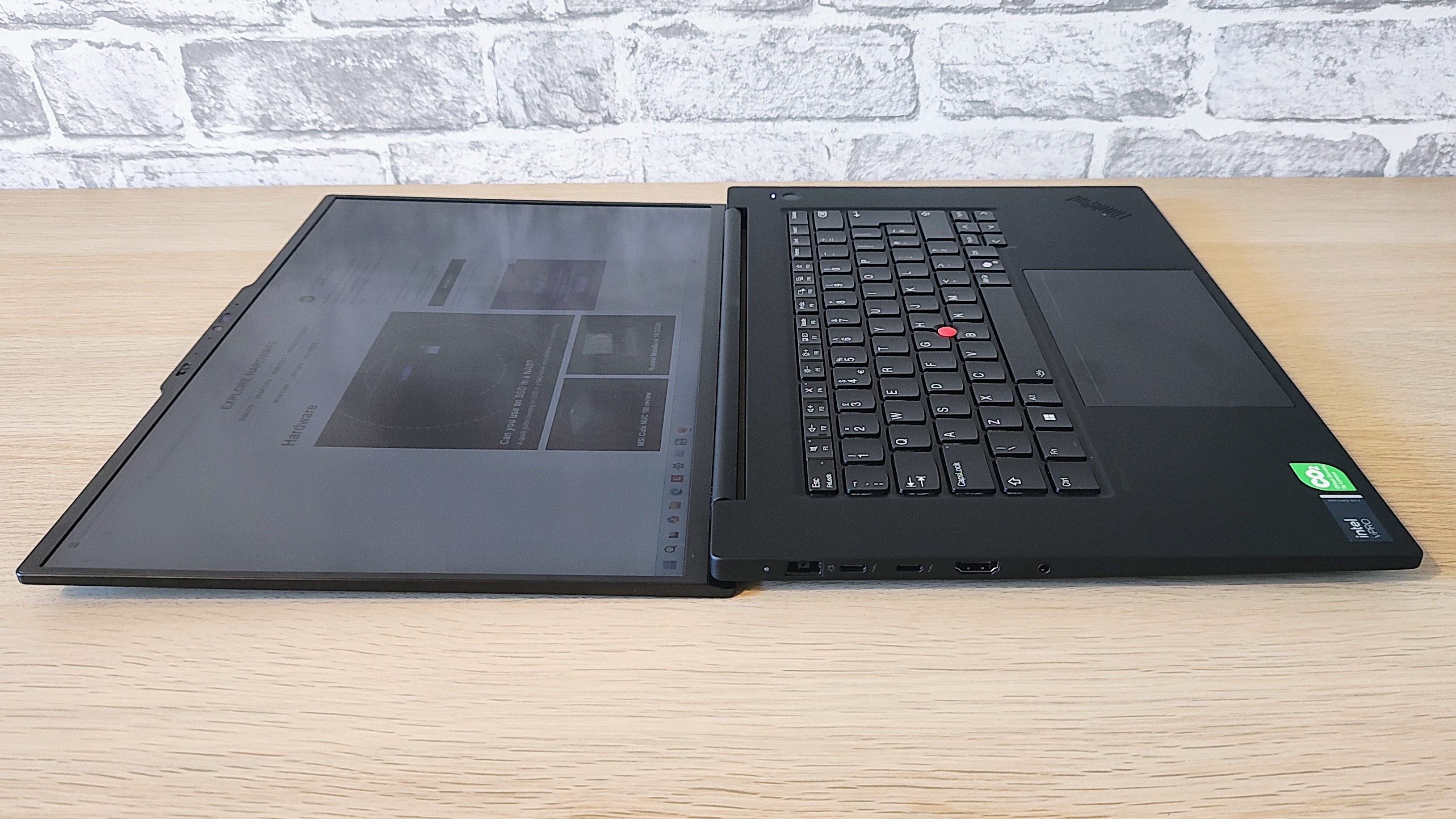
Lenovo ThinkPad P1 Gen 7: Display
The P1 Gen 7 is available with three display options, 1,920 x 1,200 60Hz IPS, 2,560 x 1,600 165Hz (both non-touch), and 3,840 x 2,400 60Hz OLED touchscreen. The higher resolution IPS display is a £60 upgrade while the OLED screen is a £350 option.
The 2.5K IPS display is a solid choice for productivity use with a high maximum brightness level of 513cd/m2 and an sRGB color gamut volume of 104%. The DCI-P3 and AdobeRGB gamuts are more limited at 73.7% and 71.6% respectively which would preclude use as a pro-level creative tool.
The IPS-screed P1 Gen 7 comes loaded with three color profiles, sRGB, Rec709, and DICOMM. Against the first two, the Delta E color variances registered at 1.1 and 1.2 respectively meaning they are so close to perfect that the human eye won’t be able to detect any deviation.
If you want a laptop for serious creative work then the wide-gamut OLED model is clearly the one to pick but for all other uses the 165Hz IPS panel should do just fine. The 165hz refresh rate pays big dividends when scrolling through text or data sets, thanks to levels of motion smoothness that a 60Hz panel can’t even hope to match.
It’s a small shame that the screen doesn’t offer dynamic switching between 165Hz and 60Hz though given the size of the P1’s battery the run time hit you’ll suffer from leaving it in 165Hz mode isn’t worth losing sleep over. A useful physical attribute of the screen is the ability to fold back flat to 180 degrees.
Lenovo ThinkPad P1 Gen 7: Specs and Performance
Our review unit came fitted with a 16-core Core Ultra 7 165H CPU, integrated Intel Arc GPU, 32GB of RAM, and a 1TB Kioxia SSD. In our 4K multi-media benchmark the P2 scored an impressive 412 points while in the PCMark 10 test, it scored 7,149. Those results put the new P1 up with the best of the competition like the standard M3 MacBook Pro. If you want more performance you can opt for the faster Core Ultra 9 CPU.
Clearly, if you want to run demanding graphics tasks you are going to opt for a P1 Gen 7 with a dedicated GPU but the integrated Intel Arc GPU is far from useless. Running the SPECviewperf 3dsmax07 modelling test the P1 Gen 7 managed 23.7fps, well short of the 90fps you’d expect from a machine with an Nvidia RTX 4070 or RTX 2000 ADA GPU, but still a useable speed.
Where the P1 Gen 7 earns its spurs as a workstation is in its ability to run flat out for prolonged periods without any sort of throttling. Using the FurMark and Prime 95 apps to stress both the CPU and GPU the P1 Gen 7 ran at 100% utilization across the board until we turned it off after six hours. During the stress run the fan noise was audible but by no means intrusive and the outside of the P1 Gen 7 never got more than warm to the touch.
The Kioxia SSD in our review units proved a sprightly little performer, recording sequential read and write speeds of 5,128MB/s and 4,663MB/s respectively. The SD card reader didn’t perform too badly either, recording speeds of 150MB/s and 80.4MB/s in the same test.
In our standard battery test where we run a 720p video in VLC with the screen set to 170cd/m2 until the lights go out the P1 Gen 7’s 90Wh battery lasted for 15 hours 29 minutes which is a very healthy performance, comparable to what you’d expect from the likes of an M3 MacBook Pro or the larger-screen Snapdragon-X laptops like the Asus Vivobook S 15.
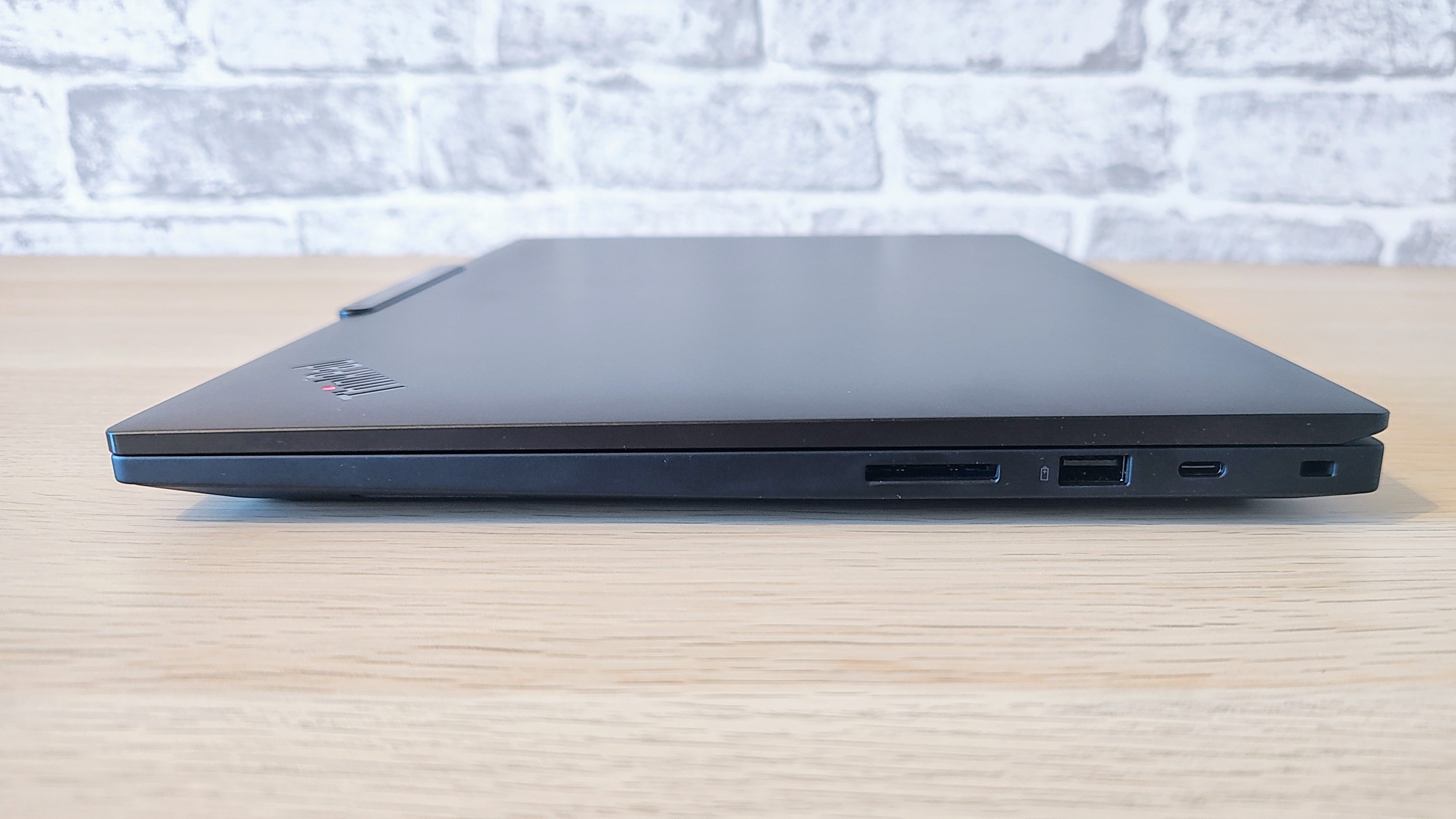
Lenovo ThinkPad P1 Gen 7: Is it worth it?
When looking at machines like the ThinkPad P1 G7 it feels wrong to get bogged down in the sordid matter of money. This is a premium laptop aimed at discerning users with deep pockets who want one of the best workstation laptops on the market. Such things never come cheap.
Having acknowledged that we are straying into the arena of money being no object the new ThinkPad has to be awarded five stars for its excellent design, faultless build quality, impressive battery life, and a vast range of specification alternatives.
Looking at Lenovo’s configurator we discovered that a machine with the same basic spec as our test unit but with an Nvidia RTX 4060 GPU would set us back £3,049 (£2,540 ex VAT). Granted that price includes the £520 discount that Lenovo is currently offering but the end result would be a potent laptop that’s worth every penny.
Lenovo ThinkPad P1 Gen 7 specifications
| Display | 16-inch 2.5K (2,560 x 1,600), 165 Hz IPS | Row 0 – Cell 2 | Row 0 – Cell 3 |
| Processor | Intel Core Ultra 7 165H | Row 1 – Cell 2 | Row 1 – Cell 3 |
| GPU | Intel Arc Integrated Graphics | Row 2 – Cell 2 | Row 2 – Cell 3 |
| RAM | 32GB LPDDR5X | Row 3 – Cell 2 | Row 3 – Cell 3 |
| Ports | 2x Thunderbolt 4, 1 x USB-C 3.2 Gen 2, 1x USB-A 3.2 Gen 1, HDMI 2.1 port | Row 4 – Cell 2 | Row 4 – Cell 3 |
| 3.5mm audio jack | Yes | Row 5 – Cell 2 | Row 5 – Cell 3 |
| Card reader | SD Express 7.0 | Row 6 – Cell 2 | Row 6 – Cell 3 |
| Storage | 1TB PICe 4 SSD | Row 7 – Cell 2 | Row 7 – Cell 3 |
| Connectivity | Wi-Fi 7, Bluetooth 5.4 | Row 8 – Cell 2 | Row 8 – Cell 3 |
| Weight | 1.82kg | Row 9 – Cell 2 | Row 9 – Cell 3 |
| Battery | 90Wh | Row 10 – Cell 2 | Row 10 – Cell 3 |
| Operating System | Windows 11 Home | Row 11 – Cell 2 | Row 11 – Cell 3 |
Source link




